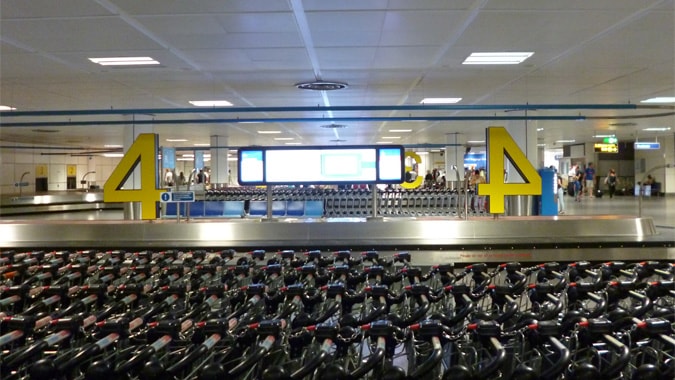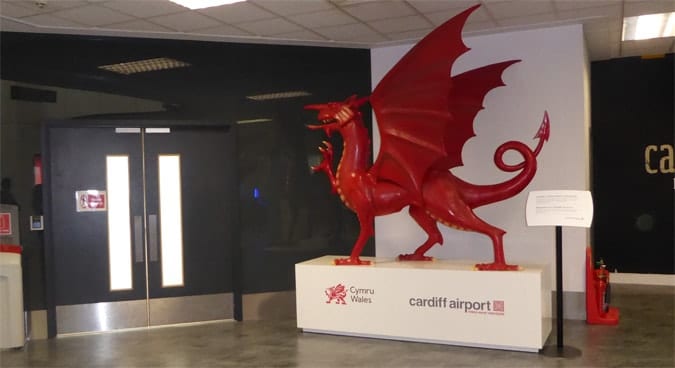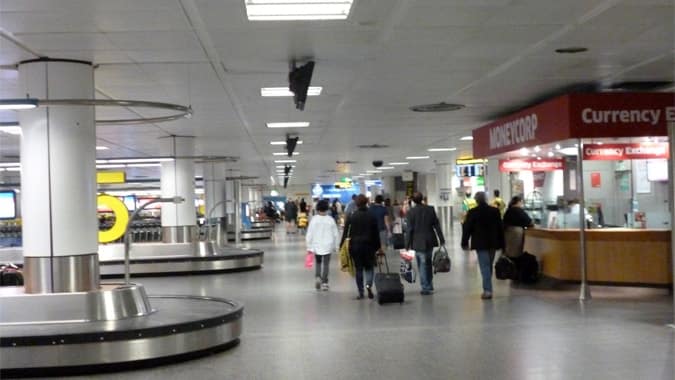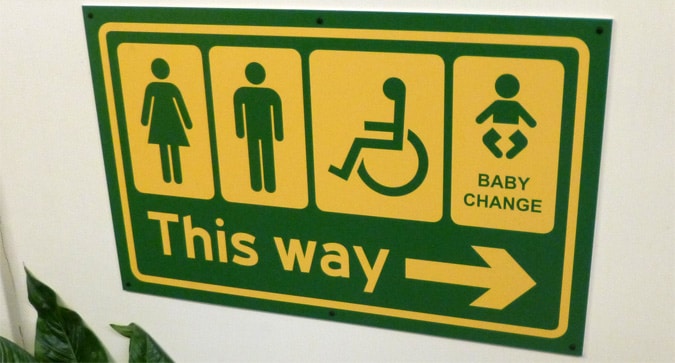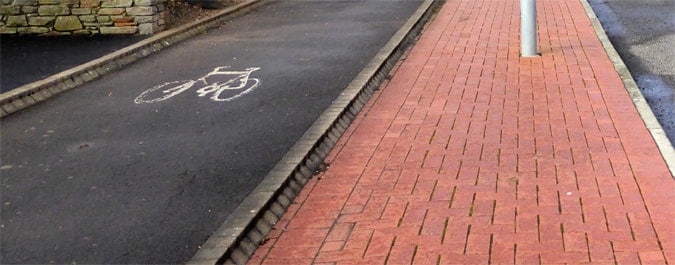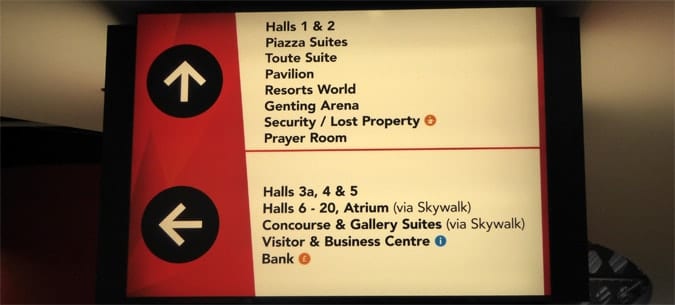Last Updated on June 12, 2023
In this post, a look at temporary signage and what happens when digital signage fails.
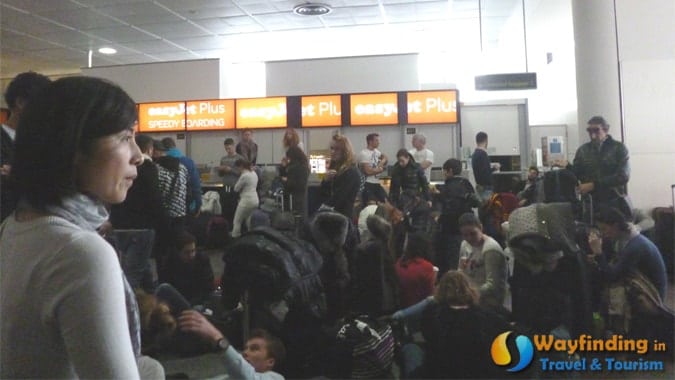
- –> Gatwick taking a lead in provision for special assistance passengers.
- –> Building great customer service under the guidance of Tom Harris
When we think about wayfinding there always seems to be a presupposed idea of signage and direction giving as being something which is permanent and static.
This is often though not the case and certainly something you will quickly discover if you are unfortunate enough to experience a canceled flight and the chaos which can take place when a terminal all but closes down, with multiple or all flights canceled.
Imagine if not only the flights are canceled, but some or all of the cafés and toilets are also closed down to.
This was our experience recently in Gatwick Airport in London with the North Terminal in the airport having a power black-out and resulting in no Easyjet flights being able to leave from the terminal (some other airlines such as British Airways did manage to still get their flights to leave).
Many people checked their bags in and were then left for hours (and more than a day in several cases) without their baggage and nowhere to go.
Dr Paul Symonds
Table of Contents
The Wayfinding Connection
In an experience where you are faced with a cancelled flight and are not even sure if there are any alternative flights, if there are on what day and from where, the experience becomes a wayfinding situation which is both a very practical and a theoretical one.
You might wonder how a wayfinding experience can be theoretical in a live situation but consider the vast number of options you have to quickly think through in your mind in order to come to the best possible decision within as short of a time frame.
There might be several forms of transport to choose from which could help to get you back home to another city in the UK, in order to avoid having to spend 2-3 days stuck in the airport over Christmas.
The process becomes very much a ‘wayfinding’ experience in which you have to consider if:
- There are alternative flights from the same airport to the same destination (in our case to Catania, Sicily).
- One can fly to the same destination country and then connect to the final planned destination.
- If it is necessary to try and get back to one’s home city (if it is in the UK) and if so if there is transport to do this given the time of day.
- If returning home in the UK, what forms of transport have availability late on Christmas Eve?
- The cost implications.
- If staying in a hotel at or very close the airport is the best option.
An investigation, in fact, has now been set in motion to investigate the very experiences I came across in the airport, with the authorities wondering how passengers could find themselves in third-world style travel conditions in London.
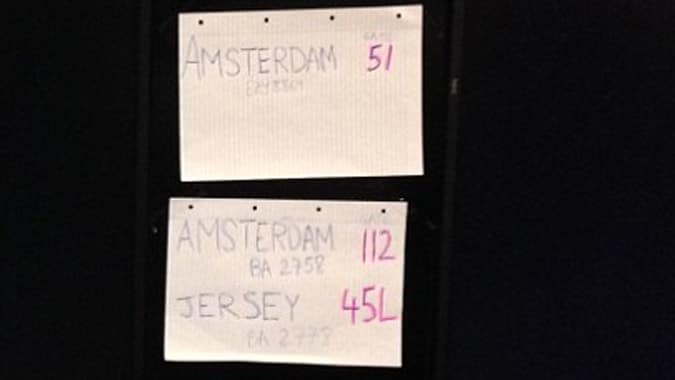
The Problems
- Turning up at the terminal to see people sat and lay down on the floor strewn right across the check-in area, in what looks like a war zone. An area in utter chaos.
- No information at all about any flights and a few airline representatives randomly walking around and chatting individually to 2 or 3 people at a time, rather than communicating each time to significantly larger numbers of people. Some temporary signage up using hand-written notes.
- Toilets closed down on 2 levels of the terminal and with no clear information on where alternative toilets can be found and in the one situation where I did happen to see an airport staff member, they directed me down to the toilets which were the closed ones.
- Synchronous information which results in conflicting information between the live airline website (in this case it was easyjet.co.uk) and what staff in the terminal are saying. The Easyjet website said to head to the other terminal (South) and to check the bags we had in, whilst staff in the North terminal told us to sit and wait for further information for example. Wayfinding through the process becomes problematic when the different departments within an airline do not match.
- An airport terminal with no additional airport staff (at least which we were able to see despite walking around).
- Getting an email from the airline offering to pay for an overnight hotel but getting the text message separate from the flight cancellation text and thus after you have scrambled to get what might be the last few seats on a coach home on what is Christmas Eve, afternoon, by the time you realise you could have booked a hotel.
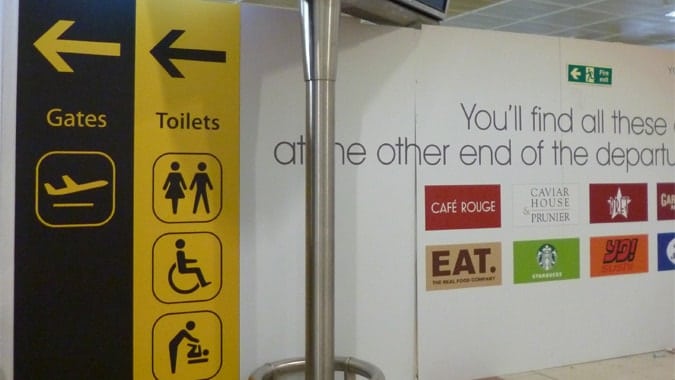
Dealing with Issues Faced
As I found out several years ago when my Ryanair flight was canceled in Palermo, Sicily, dealing with the situation can be confusing, complex, and stressful.
If you wait for the chance to try and get through on the customer services telephone number or wait to try and talk to a member of staff (it was utter chaos and there were NO members of the airline staff available) then you can find that you lose the rush to book any available seats for the next 1, 2 and 3 days on the same route.
Using technology such as a mobile phone or iPad to quickly find another flight or alternative form of transport is now something which becomes a real alternative.
Instead of getting caught up in the angry crowds who flood the airline staff desk (when one exists) for re-booking, is something you can avoid.
Take a seat in a quiet area and using the free internet you can get in an airport such as Gatwick Airport, you can book a replacement flight quickly before others start to fill the seats.
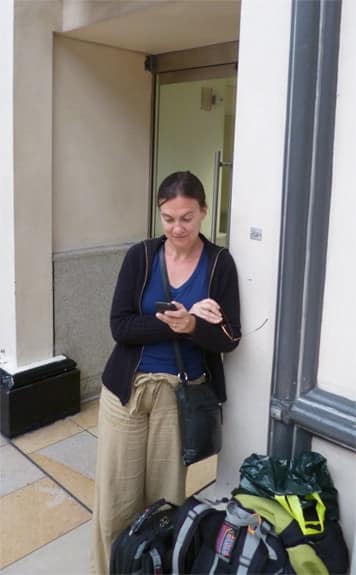
If no seats exist such as was the case for my wife and I in Gatwick, getting back to our home city in the UK and avoiding having to spend 2-3 days in the airport became our immediate priority.
Be warned though. Easyjet.co.uk will offer to pay for your hotel for a night (they offered to book the hotel or let us book the hotel and they would refund us) BUT spend a much lesser amount for a coach ticket to avoid getting stuck in the airport and to thus avoiding the need for a hotel and they refuse to reimburse you.
Wayfinding both practically and theoretically in a real living and real-life travel scenario for which the normal signage, routines and plans are not set up to entertain, requires us to think on our feet almost literally.
This type of travel situation is really what travel is about in many respects, in that travel is very much a socio-cultural organic experience and not everything can be set to a schedule and to be planned so perfectly.
Scenarios and wayfinding situations that involve so many thousands of people, so many organizations (travel providers) and so many other factors, mean that wayfinding as an art is something that needs planning for on a much deeper level.
I tackle how wayfinding can be improved in the recommended solutions section below.
Recommended Solutions
I am writing this post not to simply detail problems that can occur in travel spaces, but also to highlight how wayfinding is more than just permanent signage. Many of the problems occur in dynamic travel situations.
Easyjet in this case perhaps are victims also themselves in that the airport authorities and/or owners should not be running the electrical source for the terminal, right beside a river (the cause of the problem with heavy rain flooding the river and thus affecting the power unit).
Easyjet and the airport could so easily though, improve the conditions and make things much easier for the passengers. Some quick solutions are below:
Airline/s and the Airport/s
- Better use of people as a resource: It is hard not to get the feeling that airline and airport staff try to hide away when they know that crowds of sometimes angry travelers are heading their way. One can sometimes sympathize with the type of people some airline staff have to deal with. More people made available though, to help the travelers and provided by airlines and the airport, would be a positive move.
- Buy large digital hand-held sign boards which can be used for power cuts and can be manually used to hold in the air. Information such as terminal changes for specific flights can then easily be seen by dozens or a hundred-plus people at a time rather than someone walking around informing two people at a time and randomly (the departure boards were frozen due to the power cut). Similarly, using a digital sign to simply inform people of where to go for toilet facilities would have helped many people feel far less frustrated as they tried to find their way around the airport.
- Better acoustic devices need to be used, such as a tannoy or loudspeakers instead of having members of staff walking around using their own natural voices to try and project the message (as was our experience). Even in a power cut, battery-operated audio equipment are easy to use devices.
- Synchronous Information – so that updates on the website match what the employees on the ground are saying.
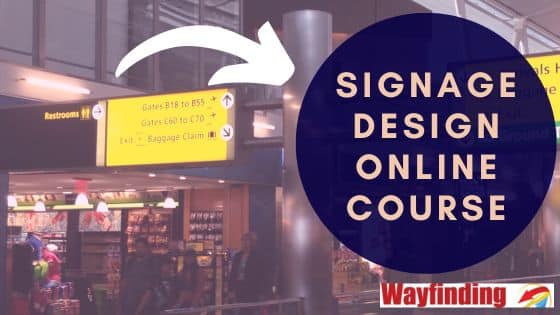
Passengers
- Consider doing the opposite to many people i.e. the people who automatically head for the airline bookings desk, to try and get onto a replacement flight. Your best bet can be head to a quiet area and focus on using the internet to analyze, compare and book your alternative way. Wayfinding can be the whole process of getting from A to B and being stuck in an airport means taking control of your overall travel plans. Technology offers us a great way to micro-manage our own journey.
- Refrain from getting angry with staff members. This never yields results and just makes things worse. As hard as things get it simply never helps anyone involved.
- Do not get separated from your luggage if you think your flight is likely to be canceled. A mistake many people make and made in this situation.
Updates
Since writing this post, Gatwick airport has generously offered each passenger whose flight was canceled on Christmas Eve, £100 in high street gift vouchers as an apology.
We have now received the vouchers which we were promised. It took 5 weeks but Gatwick Airport was under no obligation to give us vouchers and so the offer has been gratefully received and I will happily use Gatwick Airport again in the future.
Gatwick has spent a lot of trying to overcome these problems and has put many procedures in place to try and stop many of the things mentioned above from happening again.
More Useful Resources
- More on the cancelled flights from BBC
- Your delayed flights rights from the CAA.
- Flight delay compensation.
Dr Paul Symonds has a PhD in Wayfinding from Cardiff Metropolitan University in the UK. Paul works with the signage industry, airports and other locations providing wayfinding audits, consultancy and training.


